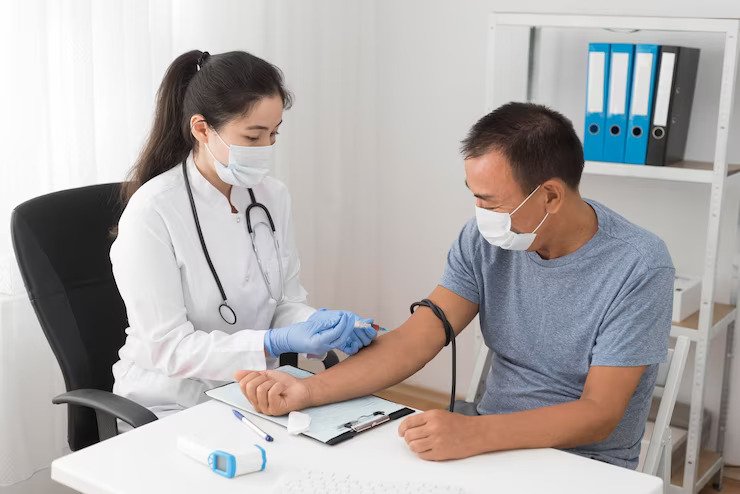Key Takeaways:
- Telemedicine offers convenience and accessibility to patients, especially those in rural areas.
- Telemedicine can lead to cost savings for patients and healthcare providers.
- Telemedicine improves efficiency by optimizing healthcare professionals’ schedules and reducing waiting times for patients.
- The future of telemedicine includes the use of AI for accurate diagnoses, VR for pain management, and remote monitoring devices for proactive healthcare.
- Georgia has actively supported telemedicine through legislation and initiatives to improve access to quality healthcare, particularly in rural areas.
- Challenges to overcome in telemedicine adoption include internet connectivity, education for healthcare professionals, and patient privacy concerns.
- The integration of telemedicine with electronic health records and its expansion into specialized fields are emerging trends in Georgia.
- Enhancing telecommunication infrastructure is crucial for the advancement of telemedicine in Georgia.
The Benefits of Telemedicine
Telemedicine, also known as telehealth, is revolutionizing the way healthcare is delivered and received. This innovative approach harnesses the power of technology to provide convenient and accessible medical care to patients, regardless of their location. With telemedicine, patients can consult with healthcare professionals remotely, eliminating the need for in-person visits and reducing the burden on traditional healthcare infrastructure.
Convenience and Accessibility
One of the greatest advantages of telemedicine is the convenience and accessibility it offers to patients. With telemedicine, individuals can schedule appointments and consult with doctors without the need to travel long distances or spend hours in waiting rooms. This is especially beneficial for individuals residing in rural areas, where access to specialized healthcare services can be limited. Telemedicine allows patients to receive expert medical advice and treatment without the barriers of distance and time.
Furthermore, telemedicine enables individuals with mobility issues or chronic illnesses to receive medical care from the comfort of their own homes. This not only improves their overall healthcare experience but also enhances their quality of life. Patients no longer have to endure the physical and emotional stress of traveling to healthcare facilities, making healthcare more accessible and manageable.
Cost Savings
Another significant advantage of telemedicine is the potential for cost savings. Traditional in-person healthcare visits often involve various expenses, including transportation costs, parking fees, and time away from work. Additionally, patients might face high medical bills due to the need for specialized services or consultations with out-of-network providers.
Telemedicine eliminates many of these costs. Patients can save money on transportation and parking fees while also reducing the time spent on traveling to healthcare facilities. Moreover, telemedicine consultations are generally more affordable compared to in-person visits, making healthcare more cost-effective for patients. This is particularly beneficial for individuals with chronic conditions that require frequent follow-up appointments.
Efficiency and Time Savings
Telemedicine has the potential to greatly improve the efficiency of healthcare delivery. Unlike traditional healthcare settings, telemedicine allows healthcare providers to optimize their schedules by reducing the time spent on non-essential tasks such as documentation and travel between appointments. This results in improved productivity and better utilization of healthcare professionals’ time.
For patients, telemedicine eliminates the need to spend excessive time in waiting rooms. With virtual consultations, patients can have their medical concerns addressed promptly, reducing the overall time spent on healthcare visits. This increased efficiency benefits both patients and healthcare providers, leading to better patient outcomes and satisfaction.
Breakthrough Technologies in Telemedicine
The future of telemedicine holds exciting possibilities with the development and integration of breakthrough technologies. These advancements not only enhance the patient experience but also offer new opportunities for diagnosis, treatment, and monitoring.
Artificial Intelligence in Diagnoses
Artificial Intelligence (AI) has already made significant inroads in various industries, and healthcare is no exception. In telemedicine, AI can play a crucial role in assisting healthcare professionals with accurate diagnoses. AI algorithms can analyze large amounts of patient data, including medical history, symptoms, and test results, to identify patterns and suggest potential diagnoses.
This technology has the potential to improve diagnostic accuracy and reduce errors. By leveraging AI, healthcare providers can benefit from advanced decision support systems that aid in complex diagnoses, ensuring safer and more reliable outcomes for patients. AI-powered telemedicine platforms can also provide real-time guidance to healthcare professionals during virtual consultations, enhancing the quality of care delivered remotely.
Virtual Reality for Pain Management
Virtual Reality (VR) is emerging as an effective tool for pain management and rehabilitation. By creating immersive experiences, VR can distract patients from their pain, resulting in decreased pain perception. This technology is particularly beneficial for individuals undergoing painful procedures or dealing with chronic pain.
In telemedicine, VR can be utilized to deliver virtual pain management sessions to patients in their homes. With the guidance of healthcare professionals, patients can participate in VR-based therapies that help alleviate pain and improve their overall well-being. This not only reduces the reliance on traditional pain medications but also offers a non-invasive and non-pharmacological approach to pain management.
Remote Monitoring Devices
Telemedicine is also being expanded through the use of remote monitoring devices. These devices allow healthcare professionals to remotely monitor patients’ vital signs, symptoms, and treatment adherence. By collecting and analyzing real-time data, healthcare providers can make informed decisions regarding patient care and intervene promptly when necessary.
Remote monitoring devices enable patients to manage their health conditions more effectively, as they can receive personalized feedback and guidance from healthcare professionals. This technology is especially valuable for individuals with chronic diseases, such as diabetes or hypertension, as it allows for proactive management and early detection of potential health issues.
Telemedicine Adoption in Georgia
In recent years, Georgia has made significant strides in adopting telemedicine as a vital component of its healthcare system. The state recognizes the immense potential of telemedicine in improving access to quality healthcare, particularly in rural and underserved areas.
Legislative Support and Regulation
Georgia has actively supported telemedicine through legislative actions and regulations. In 2019, the state passed the Georgia Telehealth Act, which expanded the definition of telemedicine and established requirements for its practice. This act ensured that healthcare providers could be reimbursed for telemedicine services and allowed the use of remote prescribing in certain circumstances.
Furthermore, Georgia’s Medical Board and other regulatory bodies have adopted guidelines to ensure the safe and effective delivery of telemedicine. These regulations include requirements for patient consent, privacy protection, and standards of care. By implementing clear regulations, Georgia has created a supportive environment for telemedicine adoption.
Telehealth Initiatives in Rural Areas
Rural areas often face challenges in access to healthcare due to geographical limitations and a shortage of healthcare professionals. Telemedicine has been instrumental in bridging this gap in Georgia. The state has implemented various telehealth initiatives to bring healthcare services to rural areas and underserved communities.
Telemedicine programs such as the Georgia Rural Health Innovation Center and the Georgia Partnership for Telehealth have been successful in connecting rural patients with healthcare providers through virtual consultations. These initiatives have not only improved access to care but also enhanced the overall health outcomes of rural residents.
Challenges to Overcome
While telemedicine adoption in Georgia has been promising, there are still challenges to overcome. One of the key obstacles is ensuring widespread access to reliable internet connectivity, particularly in remote areas. Without adequate internet infrastructure, the full potential of telemedicine may not be realized.
Another challenge is the need for continued education and training for healthcare professionals. Telemedicine requires specific skills and knowledge to effectively deliver care remotely. By providing training opportunities and resources, Georgia can equip healthcare professionals with the necessary tools to embrace telemedicine fully.
Additionally, concerns surrounding patient privacy and data security must be addressed to build trust in telemedicine. Developing robust systems and protocols for secure data transmission and storage will be essential in ensuring patient confidentiality and compliance with healthcare regulations.
The Future of Telemedicine in Georgia
The future of telemedicine in Georgia is bright, with several emerging trends and developments on the horizon.
Integration with Electronic Health Records
Efforts are being made to integrate telemedicine platforms with electronic health records (EHRs). This integration would enable seamless sharing of patient information between healthcare providers, leading to better continuity of care. By accessing comprehensive patient data during virtual consultations, healthcare professionals can make well-informed decisions and provide personalized treatment plans.
Telemedicine in Specialized Fields
As telemedicine continues to evolve, its application in specialized fields such as mental health and dermatology is gaining traction. Telepsychiatry allows individuals to receive counseling and therapy remotely, breaking down barriers to mental healthcare. Teledermatology enables dermatologists to diagnose and treat skin conditions through virtual consultations, reducing the need for in-person visits.
Expanding telemedicine into specialized fields enhances access to specialized care and addresses the shortage of specialized healthcare providers in certain areas. It also contributes to improved patient outcomes by ensuring timely and appropriate treatment.
Enhanced Telecommunication Infrastructure
The advancement of telemedicine in Georgia relies on the availability of reliable and high-speed internet connectivity. As technology continues to improve, efforts are underway to enhance the telecommunication infrastructure in the state.
Partnerships between healthcare organizations, internet service providers, and government agencies are being forged to expand broadband access, particularly in rural areas. By investing in infrastructure development, Georgia can bridge the digital divide and enable equitable access to telemedicine across the state.
In conclusion, telemedicine is transforming healthcare delivery in Georgia, offering convenience, cost savings, and improved efficiency. Breakthrough technologies such as AI, VR, and remote monitoring devices are further enhancing the capabilities of telemedicine and paving the way for personalized and proactive care. With legislative support, telehealth initiatives, and a focus on addressing challenges, the future of telemedicine in Georgia looks promising. By embracing the potential of telemedicine and investing in its growth, Georgia can provide accessible and high-quality healthcare to all its residents.
FAQ
Question: What is telemedicine? – Telemedicine, also known as telehealth, is an innovative approach that uses technology to provide convenient and accessible medical care to patients remotely. It allows patients to consult with healthcare professionals and receive treatment without the need for in-person visits.
Question: How does telemedicine benefit patients? – Telemedicine offers several benefits to patients. It provides convenience and accessibility, particularly for individuals in rural areas or with mobility issues. It also leads to cost savings by eliminating transportation expenses and reducing the overall cost of healthcare. Additionally, telemedicine improves efficiency by reducing waiting times and optimizing healthcare professionals’ schedules.
Question: What breakthrough technologies are being integrated into telemedicine? – The future of telemedicine includes the integration of breakthrough technologies such as Artificial Intelligence (AI) for accurate diagnoses, Virtual Reality (VR) for pain management, and remote monitoring devices for proactive healthcare. These technologies enhance the patient experience and offer new opportunities for diagnosis, treatment, and monitoring.
Question: How is Georgia supporting the adoption of telemedicine? – Georgia has actively supported telemedicine through legislation and initiatives. The state has passed the Georgia Telehealth Act, expanded the definition of telemedicine, and established requirements for its practice. Telehealth initiatives have also been implemented to improve access to quality healthcare in rural and underserved areas.
Question: What challenges need to be overcome in telemedicine adoption? – Telemedicine adoption faces challenges such as ensuring widespread access to reliable internet connectivity, providing education and training for healthcare professionals, and addressing patient privacy concerns. These challenges need to be addressed to fully realize the potential of telemedicine.
Question: What are emerging trends in telemedicine in Georgia? – The integration of telemedicine with electronic health records (EHRs) is an emerging trend in Georgia. Efforts are being made to seamlessly share patient information between healthcare providers. Telemedicine is also gaining traction in specialized fields such as mental health and dermatology, addressing the shortage of specialized healthcare providers.
Question: How important is enhanced telecommunication infrastructure for telemedicine in Georgia? – Enhanced telecommunication infrastructure is crucial for the advancement of telemedicine in Georgia. Investing in reliable and high-speed internet connectivity, especially in rural areas, bridges the digital divide and ensures equitable access to telemedicine across the state.
Question: What are the benefits of telemedicine? – Telemedicine offers convenience and accessibility to patients, especially those in rural areas. It can lead to cost savings for patients and healthcare providers. Telemedicine also improves efficiency by optimizing healthcare professionals’ schedules and reducing waiting times for patients.








